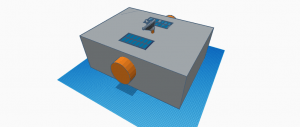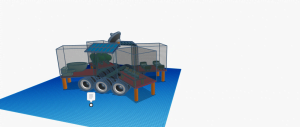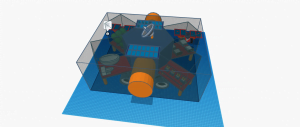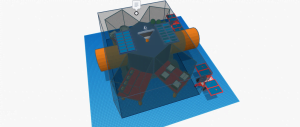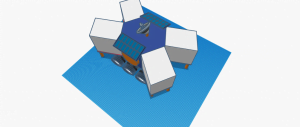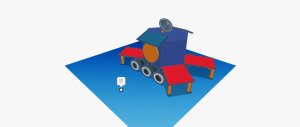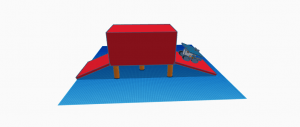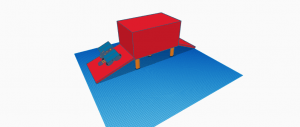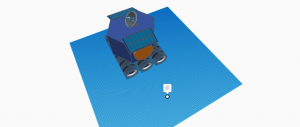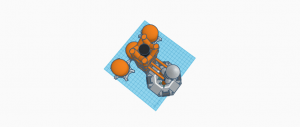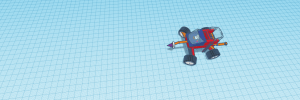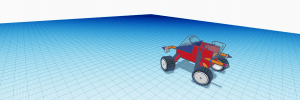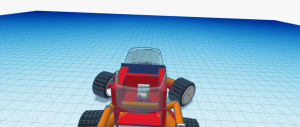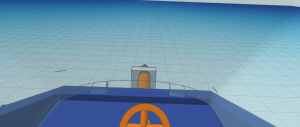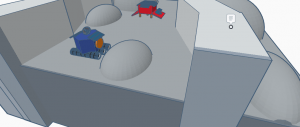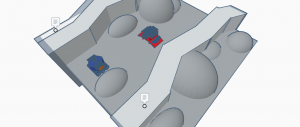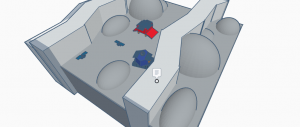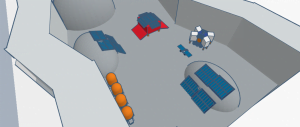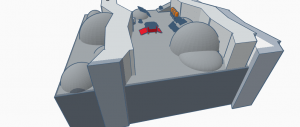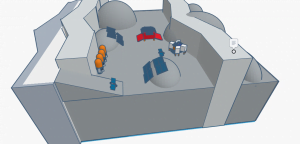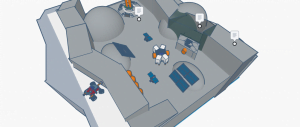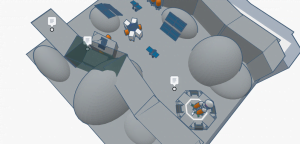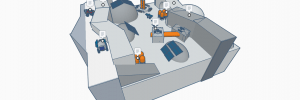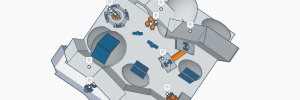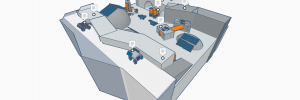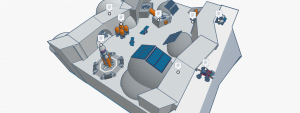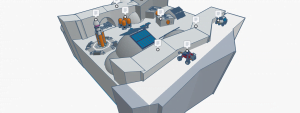Moon Camp Explorers Gallery 2020-2021
In Moon Camp Explorers each team’s mission is to 3D design a complete Moon Camp using Tinkercad. They also have to explain how they will use local resources, protect astronauts from the dangerous of space and describe the living and working facilities.
Team: Star Alliance (Aliança Estelar)
Agrupamento de Escolas de Nisa Nisa Portugal 11, 12, 10
External link for 3d
|
Project description
This field was built in 6 stages, considering the 3 missions that will be necessary to build it. Thus, each of the construction and technology installation missions would have to be carried out by two rockets and two lunar modules. One cargo, which would serve to replace the crews, another that would be the base module on which the shelters would be built. |
|||
|
Where do you want to build your Moon Camp?
Close to the Lunar Poles Why did you choose this location?
We chose this location due to the maximum duration of hours of sun exposure, that is, in this way the initial missions could take longer. But also due to the existence of water in solid form. How do you plan to build your Moon Camp? Which materials would you use?
Two modules will land. From one of them, inflatables will be used to install spaces such as: laboratory, bedroom, greenhouse and toilet. Thus, the field has: batteries to store energy, solar panels and a communications antenna. Another module will be used to change the crew and to transport support material: rovers, solar panels and nuclear reactor / hydrogen reactor. Explain how your Moon Camp will provide the astronauts with:
|
|||
|
Water
|
Food
|
Electricity
|
Air
|
|
The modules carry water that allows consumption in the early stages of the mission. Then, through drilling, transport and storage, lunar ice will be used as a source of water. Finally, in a more advanced stage of project development, either base waste, human waste or condensation resulting from small plant ecosystems will serve as a way to collect water. |
We will take dehydrated and vacuum-packed food on the initial missions. Then, through the installation of greenhouses, we will try to create food and, more than that, create small sustainable ecosystems. To plant it can be used a base of processed algae, which reduce the use of water and already provide nutrients to the seeds. A mixture of terrestrial soils, regolith and fertilizers can also be tested to accelerate the process of creating sustainable ecosystems. |
In a first phase, we will use solar energy to allow the installation and expansion of the lunar field. Then, after finding a space for ore and hydrogen storage, we will set up a small nuclear reactor. Hydrogen production will thus complement energy supply but will also allow fuel to be produced for rockets and promote the economic emancipation of the colony. |
The oxygen supply will be possible, in a first stage, through the replacement of the crews. We also know that it is possible to extract oxygen from the moon’s dust. The chemical process of hydrogen production can also be used for the extraction of oxygen. Finally, food production through a greenhouse system will allow the creation of a sustainable ecosystem, also at the level of basic life support. |
|
Describe a day on the Moon for one of your Moon Camp astronauts
In the initial missions, two engineers will have to coordinate operations for regolith collection and 3D printing of the shelter protection and assemble structures to install the solar panels. After guaranteeing the protection of the shelter and energy independence, there will be a need to identify, signal and start exploring ore deposits and ice collection sites. At the same time, two biologists will start to install a greenhouse and try to produce food. Two systems engineers will make sure that the maximum of these tasks can be operated by on-board computers. The teams will work in 3 eight-hour shifts. One shift will consist of a mining engineer, an engineer responsible for assembling the infrastructure, a biologist and one of the Systems Engineers. Another shift will have the same technical composition but with different players. The third shift will be rest. Rotatingly, one of the crew members will take a double shift to ensure the surveillance of basic life support and the lunar field.
|
|||


